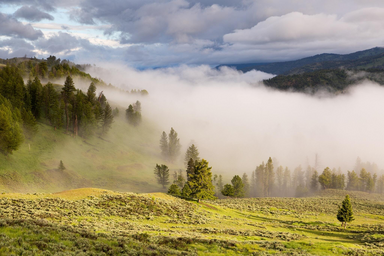Did you know you can be legally kidnapped and dropped off in the middle of nowhere to live in the wilderness for months, all in the name of mental health? This phenomenon is known as wilderness therapy. Also known as outdoor behavioral therapy, this form of mental health rehabilitation targets teenagers with drug and behavioral problems and forces them to live outdoors in isolation as an attempt at “fixing their” problems. Parents who send their children to these programs often hire transportation agencies to forcibly transfer their children to the wilderness. To repeat, it is not the decision of the children going into the program. Oftentimes, the patient is not informed about the program until they arrive. Many survivors of wilderness therapy report being taken out of their homes during the early hours of the morning without ever being given a warning or time to prepare. They are then put on a bus or plane and sent out to the wilderness with a bunch of strangers. If that doesn’t sound jarring enough, these programs can range from a few weeks to two years. That means you could be forcibly taken from your home, put on a plane, and not be allowed back for two entire years. While at the program, patients engage in a series of team-building exercises and outdoor activities. This can include hiking, fishing, tree climbing, and best of all, forced group therapy.
So where did this abrasive and traumatic form of therapy come from? According to “Camping Therapy: Its Uses in Psychiatry and Rehabilitation” by Thomas Lowry, wilderness therapy was the baby of two unrelated events in the 1900s. In 1901, overcrowding in the Manhattan State Hospital led to 40 tuberculosis patients being sent to continue their care out on the lawn. When they were brought back inside, the improvements in their physical and mental health were chalked up to their time spent living outdoors. A few years later in 1906, an earthquake in San Francisco led to patients of the Agnew Asylum being sent to live outdoors. After a few days, their mental health improved and doctors saw a decline in violent behaviors. The findings of these two events eventually led to a German Educator named Kurt Hahn founding Outward Bound in1961. Outward Bound was the first education program that sent students to live outdoors for the sake of their mental and physical health. Similar education programs began to emerge and have developed into what we know today as wilderness therapy.
The best way to learn about wilderness therapy is to hear from people who have experienced it first hand. Emmet Rensin wrote an article titled, “I went into the woods as a teenage drug addict and came out sober. Was it worth it?” about his time in wilderness therapy as a 17-year-old. He wrote, “some youth wilderness programs are sincere in their effort to help students; some believe help is best achieved by breaking them” In his article, he describes the fuzzy memory of being woken up in his home at 6 am and being taken by two strangers into an SUV. He was not given a chance to say goodbye to his family or pack his things. It wasn’t until Rensin was put on a plane that he found the voice to ask what was going on since he was not given any information before he was removed from his home and put in a van. He recalled asking the guards and travel agents that surrounded him what was happening, but no one offered him any information. Rensin wrote, “Evidently I am the only party that has not consented to this abduction.” Five hours later, he landed in Georgia. Rensin recalled crying once he arrived, something he said a lot of patients did. He said, “For God’s sake, just let me go just let me talk to my parents just let me have a phone just let me convince, I can convince, I get it, I know, I know you can’t, but let me just let me just let’s step back from what we’re doing what the rules are, just begging I am begging for an exceptional, person to person, just please.” This cry for help did not get Rensin anywhere. He recalls spending the first few days of the program in isolation, something he says is intended to allow patients to adjust and assimilate to their new reality. All he was given was a journal, some food, and a plastic spoon. The plastic spoon proved to be temporary, as he was soon made to fashion a new spoon out of wood.
Rensin’s wilderness therapy took place in Georgia, but that is not the only place they occur. The exact number of wilderness therapy programs in the United States is unknown since it is not mandatory for these programs to register with a regulatory board. Some states require registration, but most do not. This has created a series of unlicensed, unregulated, and unsupervised programs that take teens like Rensin and force them to live outdoors while they deal with their “problems.” Choosing not to get a license or register these kinds of programs begs the question,” what goes on in these programs that they don’t want outsiders to know about? In fact, some of these programs have taken legal action to conceal the fact that they exist at all. Most of these programs are filled with staff that are not properly trained nor screened before being hired. Those staff members can be in charge of patients for extended periods of time without the patient getting a choice in the matter. In 2014, a child psychologist named Nicki Bush told the Atlantic in an article titled “When Wilderness Boot Camps Take Tough Love Too Far”” that “these programs call themselves wilderness therapy or come up with their own categories so that they can avoid the criteria that would apply to, for example, a mental health treatment facility.” Rensin himself said, “You could be forgiven for believing that this corresponds to any legal or medical theory of treatment. Parents often are.”
The deception of these programs has not gone unnoticed by the government. In 2007, the Government Accountability Office filed a report on wilderness therapy programs and made disturbing discoveries about what went on at these unregulated programs. The report said, “We found thousands of allegations of abuse, some of which involved death, at residential treatment programs across the country and in American-owned and American-operated facilities abroad between the years 1990 and 2007.” Some of the examples in the report discussed a 16-year-old girl falling 50 feet to her death while climbing an ‘extremely dangerous area” at one of these programs. Another example of injustice was a 14-year-old boy who died in his sleeping bag after he was seen compulsively eating dirt due to his dehydration. Since these programs are not licensed, they are also not equipped with the proper and necessary materials needed to take care of all those patients. Because of this, counselors have been said to rely on smoke signals when help is needed because they don’t have radios. To this day, the number of casualties caused by these programs is unknown. According to the Atlantic articles, the highest unconfirmed death count for these programs is 86, and that was as of 2014. The number of unreported and unmourned deaths is unimaginable in 2021. Death is not the only thing to be feared about these programs. As previously mentioned, the staff do not have to be screened for background checks. This has led to a high number of sexual assault and abuse allegations against these programs. Many former patients reported being coerced into a sexual encounter with a counselor, some being as young as 14 when it happened. Since the people being sent to these programs are already deemed drug addicts, troublemakers, and overall bad kids, they do not get the justice they deserve when they report all the misconduct they experienced at places like these.
Emmet Rensin is not the only teenager who has had this experience. He is just one survivor of this nonconsensual, traumatic form of therapy. The Atlantic article previously mentioned interviewed several teenagers who had also been sent to wilderness therapy against their will. One girl was quoted saying, “I tried to run, and they arrested me.” Another girl says, “I was listening in on my mom’s conversation over the phone, and I heard that these people were coming to get me. I ran, so they put cuffs on me and put me in the car. I was crying my eyes out. I almost had a panic attack. This place is hell … I didn’t do that many bad things that I should get sent away to a place like this.” Children all over the world have had experiences just like this, yet wilderness therapy is still active and legal.
With all the controversy surrounding this particular form of therapy, something that does not get brought up enough is the effectiveness of these programs. The verdict on whether they work or not is mixed. The National Institutes of Health believe these programs can cause existing behavioral problems to get worse. Others have said it is life-changing and a cure-all. So what do people on the inside have to say about it? A former employee of one of these programs, Nathan Teggerdine, said these programs did not make an effort to distinguish patients who actually needed care and patients who were just dumped there by their parents. That does not sound like the mindset of a program that effectively heals its patients. It is hard to tell if people come out “cured” or just too traumatized to ever return to their old ways of behaving. Wilderness therapy may seem like a good last resort, but with all the allegations and fatalities, it should not be an option at all.

